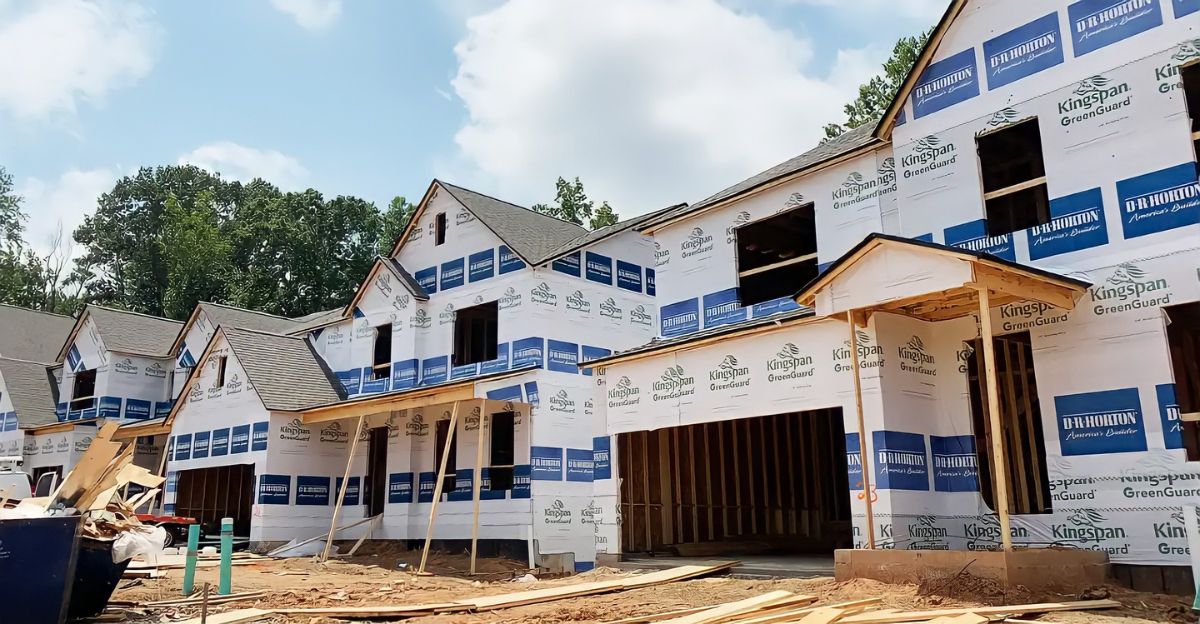
In a significant move reflecting the current state of the U.S. housing market, a leading homebuilder has announced a substantial reduction in its production plans. This decision comes as the industry grapples with a notable decline in housing demand, influenced by various economic factors. High mortgage rates, which have hovered around 6.75% to 7%, have significantly impacted affordability, deterring potential buyers and leading to a slowdown in sales.
The spring home-selling season, traditionally a peak for the housing market, has underperformed expectations. Despite an increase in housing inventory, demand remains weak, with many prospective buyers sidelined due to economic uncertainties and elevated borrowing costs.
This production cut by a major homebuilder underscores the industry’s challenges. Builders are contending with unsold inventory levels not seen since 2009, and incentives such as interest rate reductions have had limited success stimulating demand. The decision to scale back production is a strategic response to these market conditions, aiming to align supply with the current demand landscape. It highlights the broader issues affecting the housing sector, including affordability challenges and economic volatility, which continue to shape the industry’s outlook.
High Mortgage Rates Dampen Buyer Enthusiasm

The U.S. housing market’s recent struggles are mainly attributed to high mortgage rates. As of early 2025, the average 30-year fixed mortgage rate remains around 6.7%, a level that has significantly reduced home affordability. These elevated rates have made monthly mortgage payments substantially higher, pricing out many potential buyers, particularly first-time purchasers. The increased cost of borrowing has led to a decline in home sales and a cautious approach among consumers.
The Federal Reserve’s monetary policy, aimed at controlling inflation, has contributed to these higher rates. While effectively curbing inflationary pressures, the policy has inadvertently cooled the housing market by making financing more expensive. Buyer enthusiasm will likely remain subdued until mortgage rates become more affordable, prolonging the housing market’s challenges.
Affordability Crisis Intensifies

Affordability has become a central issue in the U.S. housing market. The combination of high home prices and elevated mortgage rates has made homeownership increasingly out of reach for many Americans. Data indicates that, on average, homeowners are now spending over 30% of their income on housing costs, surpassing the traditional affordability threshold.
This financial strain is particularly acute for first-time buyers and lower-income households, who are disproportionately affected by rising costs. The situation has led to a growing number of cost-burdened households, with many individuals allocating a significant portion of their income to housing expenses. The affordability crisis has also impacted the rental market, as more people delay home purchases, increasing demand for rental properties and driving up rents. Addressing this issue requires a multifaceted approach, including policies to increase housing supply and improve access to affordable financing options.
Builders Respond with Incentives

To stimulate sales amid declining demand, homebuilders have introduced various incentives to attract buyers. These include offering mortgage rate buydowns, where builders subsidize a portion of the interest rate to reduce buyers’ monthly payments. Some builders have provided rate reductions as low as 5.75% on select homes.
Additionally, builders offer other perks such as covering closing costs, providing upgrades, and offering flexible financing options. While these incentives have had some success in boosting new home sales, the overall impact has been limited due to the broader economic challenges and affordability issues facing buyers. These strategies reflect the builders’ attempts to adapt to market conditions and maintain sales volumes. However, the effectiveness of these incentives is contingent on broader economic factors, including interest rates and consumer confidence.
The Lock-In Effect Limits Inventory

A significant factor contributing to the limited housing inventory is the “lock-in effect.” Many homeowners who secured low mortgage rates in previous years are reluctant to sell their homes and take on new loans at higher current rates. This reluctance has decreased the number of existing homes available for sale.
The reduced turnover in the housing market exacerbates the supply shortage, particularly in affordable housing segments. This situation challenges potential buyers, especially first-time purchasers, who face limited options and increased competition. Addressing the lock-in effect requires policy interventions that encourage mobility, such as tax incentives or programs that facilitate the transfer of low mortgage rates. Without such measures, the housing market may experience constrained inventory levels.
Demographic Shifts Impact Demand

Demographic trends influence housing demand in the U.S. Recent studies project a slowdown in household growth, with the number of new households expected to increase by 8.6 million between 2025 and 2035, down from higher rates in previous decades.
This deceleration is attributed to declining birth rates, aging populations, and reduced immigration levels. The slower household formation rate translates to decreased demand for new housing, affecting the construction industry’s growth prospects. Understanding these demographic shifts is crucial for policymakers and industry stakeholders to align housing supply with future demand patterns, ensuring a balanced and sustainable housing market.
Regional Variations in Market Conditions

The U.S. housing market exhibits significant regional disparities. Sun Belt states like Texas, Florida, and Arizona have experienced relatively strong housing activity due to robust construction and first-time buyer offerings.
In contrast, the Northeast faces challenges from limited new construction and high land costs, leaving buyers with fewer options and higher price tags. These regional differences underscore the importance of localized strategies in addressing housing market issues. Policymakers and industry participants must consider these variations when formulating housing policies and development plans to address each region’s unique needs effectively.
Economic Policies Influence Market Dynamics

Recent economic policies, including trade tariffs and immigration measures, have had unintended consequences on the housing market. For instance, new tariffs have increased construction costs, while stricter immigration policies have led to labor shortages in the construction industry.
These factors contribute to higher home prices and reduced affordability, further dampening housing demand. Additionally, economic uncertainty stemming from these policies has affected consumer confidence, leading to more cautious spending behavior. A comprehensive approach that considers the broader financial implications of such policies is essential to mitigate their adverse effects on the housing market.
Rental Market Pressures Intensify

As homeownership becomes less attainable, more individuals turn to the rental market, increasing demand for rental properties. This surge in demand, coupled with a slowdown in new apartment construction, is leading to rising rental costs.
The increased financial burden on renters contributes to a broader affordability crisis, with many households spending a significant portion of their income on rent. This situation underscores the need for policies that promote affordable rental housing development and protect tenants from excessive rent increases. Addressing the rental market pressures is crucial to ensuring housing stability and affordability for a growing population segment.
Broader Economic Implications

The challenges in the housing market have far-reaching implications for the U.S. economy. The housing sector significantly contributes to economic activity, influencing job creation, consumer spending, and overall economic growth. A slowdown in housing construction and sales can lead to reduced employment in related industries, such as construction, real estate, and home improvement retail.
Additionally, decreased home equity growth affects consumer spending, as homeowners have less wealth to draw upon for purchases. The affordability crisis also impacts social mobility and wealth accumulation, particularly for younger and lower-income individuals who cannot enter the housing market. Addressing these issues requires coordinated efforts across various sectors to promote housing affordability and economic stability.
Discover more trending stories and Follow us to keep inspiration flowing to your feed!

Craving more home and lifestyle inspiration? Hit Follow to keep the creativity flowing, and let us know your thoughts in the comments below!
